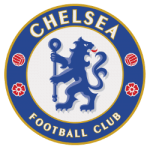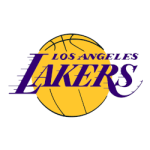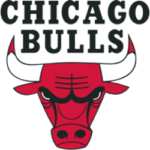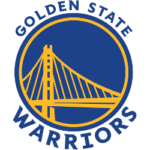Sports logos are more than just visual representations; they are symbols of identity, pride, and tradition for teams and their fan bases. Over the years, these logos have undergone significant transformations, reflecting changes in design trends, cultural influences, and the evolution of the sports industry itself. Whether it's the timeless appeal of a classic design or a modern take on an iconic emblem, sports logos have a way of capturing the essence of their teams. In this article, we will explore the evolution of sports logos, analyze critical moments in their transformation, and understand how these changes mirror different eras in sports history. As we delve into this journey, it's essential to recognize how branding elements, including sports logos and even promotional gambling strategies like the Richard Casino promo code, play a crucial role in shaping the identity and legacy of sports teams.
The Emergence of Sports Logos
In the early 20th century, as sports began to gain widespread popularity, there was a growing need for visual identifiers for teams and leagues. The first sports logos were relatively simple and often consisted of text-based or monochromatic images. These emblems served as quick identifiers for teams, marking the first steps in creating their unique identities.
 One of the earliest examples is the New York Yankees logo, introduced in 1909. This logo featured the letters “NY” in a simple font, which later evolved into the more sophisticated and recognizable mark we know today. Other early logos, like the Boston Red Sox and Chicago Cubs, also showcased a minimalist approach, reflecting the nascent stage of sports logo design.
One of the earliest examples is the New York Yankees logo, introduced in 1909. This logo featured the letters “NY” in a simple font, which later evolved into the more sophisticated and recognizable mark we know today. Other early logos, like the Boston Red Sox and Chicago Cubs, also showcased a minimalist approach, reflecting the nascent stage of sports logo design.
The Role of Heraldry and Tradition

The Mid-20th Century: Boldness and Modernization
The mid-20th century was a pivotal time in the evolution of sports logos. As society underwent rapid changes during the post-war era, so did sports teams' visual identity. This period saw a significant departure from the traditional and often conservative designs of the early 20th century. Instead, teams began embracing boldness, modernity, and innovation in their logos, reflecting a broader cultural shift towards dynamic and expressive visual styles.
During this time, logos became more than identifiers; they evolved into powerful branding tools that encapsulated the energy, ambition, and forward-thinking nature of the teams they represented. This era of modernization was marked by the adoption of bright, eye-catching colors, streamlined shapes, and a focus on creating logos that could resonate with an increasingly diverse and global audience.
The Shift to Modern Design
By the mid-20th century, sports logos began to evolve, adapting to changes in society and popular culture. The 1950s and 1960s shifted from traditional, heraldic images to more modern, bold, and graphically rich designs. This period is characterized by introducing vibrant colors, simplified forms, and a significant focus on detail.

The Influence of Pop Culture
Pop culture significantly impacted sports logos in the mid-20th century. Teams began to realize that their logos could become symbols and a part of mainstream culture. This period also saw the emergence of cartoonish and animated logo elements, which appealed to younger audiences and made teams more accessible to a broader public.
For example, the San Francisco 49ers logo, introduced in 1968, incorporated elements inspired by Western films and Wild West culture, making it instantly recognizable and popular among fans. This fusion of sports and pop culture helped logos transcend the boundaries of sports, becoming iconic symbols in their own right.
The Late 20th Century: Globalization and Brand Identity
The Rise of Global Brands
By the late 20th century, the sports industry had become increasingly globalized. Teams were no longer just local or national symbols but evolving into global brands. This shift necessitated a change in how sports logos were designed and perceived. Logos needed to be not only instantly recognizable but also versatile enough to resonate with diverse audiences across the world.
During this period, sports teams began to simplify and streamline their logos, focusing on creating symbols that could be easily reproduced and recognized in various contexts. This simplification often involved reducing the number of elements in a logo, opting for cleaner lines, and choosing bold yet universally appealing color schemes. The goal was to create logos that could be effectively used across different media platforms—from merchandise and television broadcasts to the emerging digital space.
 The Chicago Bulls logo, designed in 1966, is a prime example of this trend. The logo features a fierce red bull’s head with sharp horns, encapsulating the strength and aggression associated with the team. Its simplicity and striking design made it one of the most recognizable sports logos globally. The Bulls' logo became more than just a representation of a basketball team; it became a cultural icon, recognized and revered by fans worldwide. This period marked the beginning of sports logos as powerful tools for brand identity, capable of transcending sports to become global symbols.
The Chicago Bulls logo, designed in 1966, is a prime example of this trend. The logo features a fierce red bull’s head with sharp horns, encapsulating the strength and aggression associated with the team. Its simplicity and striking design made it one of the most recognizable sports logos globally. The Bulls' logo became more than just a representation of a basketball team; it became a cultural icon, recognized and revered by fans worldwide. This period marked the beginning of sports logos as powerful tools for brand identity, capable of transcending sports to become global symbols.
The Integration of Technology
As technology advanced rapidly in the late 20th century, designing and reproducing sports logos underwent a significant transformation. The advent of digital design tools allowed for greater precision and creativity, enabling designers to experiment with more complex and intricate designs that were previously impossible to achieve.
This era also saw the rise of computer graphics, which allowed logos to be adapted for various digital platforms. Logos needed to look good in print and television and on websites, video games, and other digital media. This adaptability became crucial as sports teams expanded their reach through new technologies.
 An excellent example of this technological integration is the Dallas Cowboys logo, introduced in 1964. The simple yet iconic blue star became a symbol of the team and American football itself. Its clean design made it easily adaptable across different formats, whether on jerseys, digital screens, or merchandise, ensuring its longevity and relevance in the digital age.
An excellent example of this technological integration is the Dallas Cowboys logo, introduced in 1964. The simple yet iconic blue star became a symbol of the team and American football itself. Its clean design made it easily adaptable across different formats, whether on jerseys, digital screens, or merchandise, ensuring its longevity and relevance in the digital age.
The 21st Century: Minimalism and Versatility
The Trend Towards Minimalism
As the 21st century dawned, design trends across various industries began to favor minimalism, and sports logos were no exception. Minimalism in logo design became popular due to its emphasis on simplicity, clarity, and versatility—crucial qualities in a world dominated by digital media and fast-paced communication.
In the modern era, sports logos are often stripped down to their most essential elements. This approach not only makes logos more visually appealing in a variety of contexts but also ensures that they remain timeless. A minimalist logo can quickly adapt to different platforms, from traditional merchandise to mobile apps and social media, without losing its impact.
A prominent example of this minimalist trend is the 2017 redesign of the Juventus FC logo. The Italian football club boldly moved by replacing its traditional shield logo with a sleek, stylized “J” symbol. The new logo sparked much debate among fans and design critics and was a clear departure from the club’s historical identity. However, creating a more modern, versatile, and globally recognizable brand was also a strategic move. The simplicity of the new logo makes it highly adaptable, ensuring that Juventus remains at the forefront of football branding in the digital age.
The Importance of Flexibility
In today’s fast-evolving digital landscape, flexibility is crucial to a sports logo's success. Modern logos must perform well across a wide range of applications, from tiny icons on mobile devices to large displays in stadiums. This requires a design that is both simple and adaptable, capable of conveying a strong brand identity in any context.

This need for flexibility also extends to the global market. As sports teams increasingly target international audiences, their logos must resonate across different cultures and languages. A well-designed logo that balances simplicity with distinctiveness can serve as a universal symbol, helping teams establish a strong presence in the global sports arena.
Wrap Up
The evolution of sports logos reflects broader societal, cultural, and technological shifts. From the early, simple designs rooted in tradition to the bold and modern logos of the mid-20th century and now to the minimalist and versatile designs of the 21st century, sports logos have continually adapted to the changing world around them. Each era has left its mark on how teams represent themselves visually, with logos serving as symbols of identity and powerful branding tools.
As we look to the future, it's clear that sports logos will continue to evolve in response to new trends and technological advancements. The rise of digital media and global connectivity means logos must be more versatile and adaptable than ever. Teams will likely continue embracing minimalism and flexibility, ensuring their logos remain relevant in a rapidly changing world.
In conclusion, sports logos are more than just emblems; they are dynamic, living representations of the teams they symbolize. As they continue to evolve, they will reflect the history and culture of the sports they represent and shape the way fans connect with their favorite teams, both locally and globally. The journey of sports logos is far from over, and the following chapters in their evolution promise to be as exciting and transformative as the ones that have come before.
___
Sports Logo History is a vibrant community of sports logo enthusiasts who share a deep appreciation for the captivating histories behind each team's logo. We take pleasure in exploring the evolution of primary logos, alternate logos, and wordmark logos from renowned leagues such as the NFL, NBA, MLB, MLS, NHL, Premier League, WNBA, CFL, NCAA, UFL, ABA, USFL, AAF, and XFL. Immerse yourself in the intricate details and stories behind these iconic symbols that represent the essence of each team.
In the enthralling realm of sports, the battle of logos among different leagues unfolds as a captivating and ongoing spectacle. Step into the world of Sports Logo History, where we showcase the relentless pursuit of distinction by leagues such as the NFL, NBA, MLB, Premier League, and countless others. Witness the captivating journey as each league strives to create logos that not only capture the essence of their sport but also resonate deeply with fans.
Immerse yourself in the comprehensive sports history provided by Sports Team History, our esteemed partner site, where you can discover the triumphs, challenges, and defining moments that have shaped the legacies of professional sports teams. Stay up to date with the latest sports news through Sports News History, a platform delivering 24/7 coverage of highlights, player interviews, and game analyses. Additionally, express your unwavering support for your favorite teams by exploring Sports Store History, the premier sports team marketplace offering a vast selection of jerseys, memorabilia, and collectibles. Join our community today and celebrate the rich history, iconic logos, and passion of sports.

